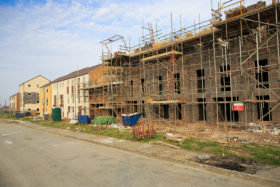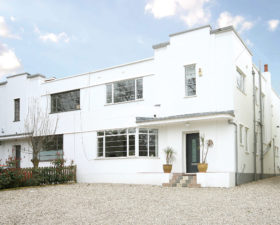
Early Bird Offer! Free tickets to meet independent experts at this summer's Build It Live
Save £24 - Book Now!
Early Bird Offer! Free tickets to meet independent experts at this summer's Build It Live
Save £24 - Book Now!We’ve all seen the scrap boards of plywood or chipboard used to extend the sides of a skip and it’s not uncommon for a site to see wastage rates of between 10 and 20 per cent, according to the findings of the Building Research Establishment (www.bre.co.uk/envprofiles).
With today’s emphasis on sustainable construction methods, we should all play our part by ordering and using panel products carefully to minimise waste, so here’s a guide to choosing and using the right board for the job.
MDF may be the king of DIY makeovers but plywood is still the prince of panels. This versatile material has been in commercial production since the 1850s when it was first used to make tea chests.
Modern plywood is made by gluing thin layers or veneers of wood together to form a solid sheet. The layers are laid with the grain running at right angles to each other to provide strength in all directions and to contain any inherent movement in the timber.
Sheets are normally made up of an odd number of layers such as three ply or five ply. This is to ensure that the sheetF remains stable as the forces are balanced out on either side of the central core.
Each opposing pair of veneers should be of a similar species and thickness, though the central core may be thicker than the surrounding layers. The thicker the ply, the less flexible it is.
Plywood’s many advantages include price, lightness, and strength. Thinner sheets can also be bent into curved components.
You can buy flexible or bendy ply that can be curved around formwork without the need to laminate thin sheets; this can be useful for curved-fronted kitchen units or a dramatic room divider. It is normally made from three plies with a thin central core and two thicker outer layers.
This arrangement allows it to be bent across the grain, while the thin inner core supports the structure and stops it from splitting.
Plywood has many variations, so for specialist applications buy from a specialist supplier who will have more knowledge than your local timber store. The basic types are:
Shuttering plywood: The cheapest of plywoods still meets building standard EN636-3 and is used for boarding up or making formwork for poured concrete. It will have poor quality face veneers with knots and defects, and may have some voids within the core.
Marine plywood: The most expensive grades are marine plywoods that are made using high-quality hardwood veneers and the very best resins.
A grade: Between the above two extremes you will probably find the grade that you need. Plywood grading is confusing since Canada, North America and Scandinavia use their own systems. American visual grading denotes as ‘A’ grade plywood that is defect-free on both sides. Scandinavia grades using numbers and Canada uses named grades.
A/B grade: This has minor defects on the back only.
A/BB grade: These boards have more major defects on the back.
B grade: Has minor defects on both sides.
Almost all building merchant plywoods are made to an exterior grade referred to as ‘WBP’ (weather and boil-proof). This means that the glue line will not break down when subjected to adverse weather conditions, and can also withstand immersion in boiling water.
Under Building Regulation 7. BS 5268 Part 2, Section 4, specific grades of plywood are recommended for load bearing use. As different countries of manufacture may have different standards, check with the supplier that the boards you want to use meet the Building Regulation standards for your application.
Plywood is best cut using powered saws because it is made from real wood veneers and is vulnerable to splintering.
Ply can be jointed with screws and the alternating grain directions mean that it still has strength close to the edge. The better quality boards may be treated with a paint or preservative just like solid wood.
In terms of size, you can buy thicknesses from 1.5 to 40mm. The common board dimension for this and other boards is 2,440 x 1,200mm but ply can be made to special order in 3,050mm or even longer lengths.
Ply boards may absorb water when used in kitchens and bathrooms. This is why the expansion gap all around a floor perimeter is so vital. If it’s too narrow, the boards can expand and cause the floor to bow upwards.
Published: May 2008


Comments are closed.